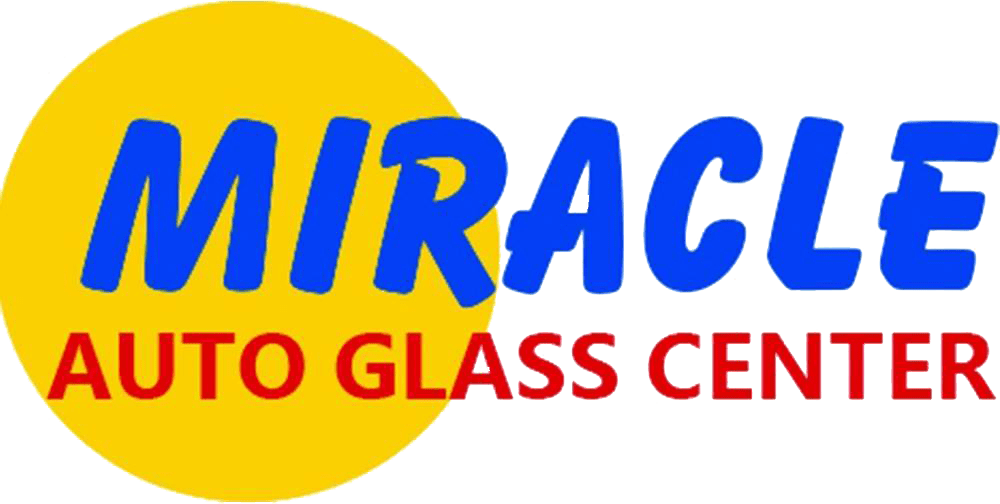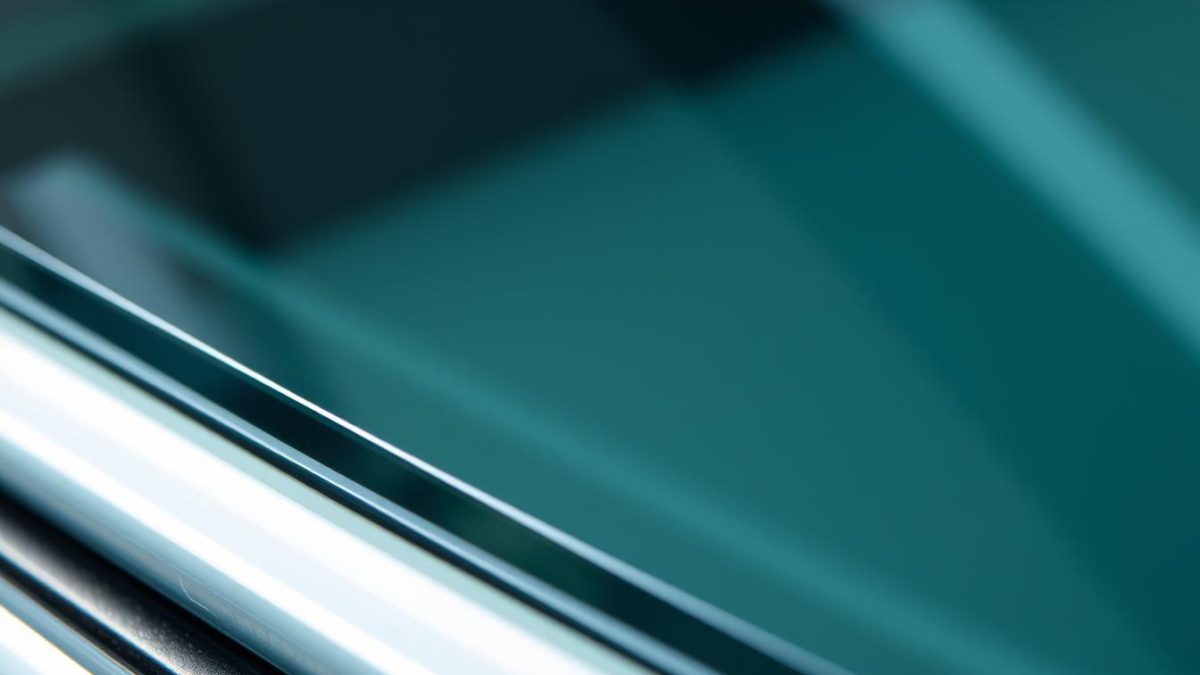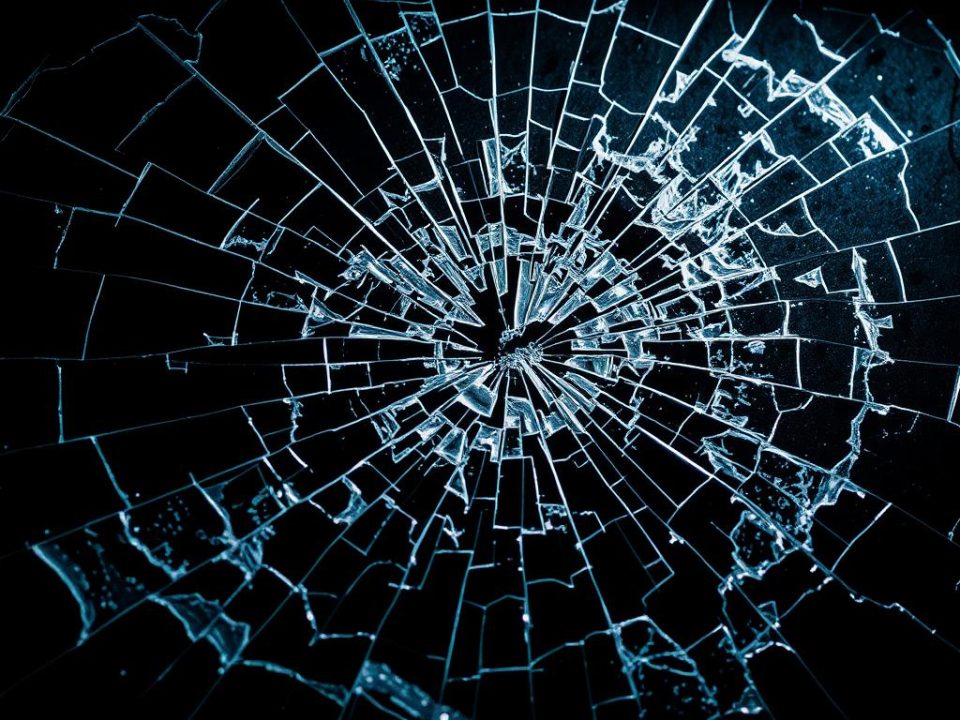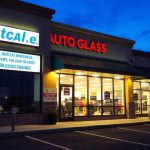
Why Choosing a Local Auto Glass Shop Beats the Big Chains
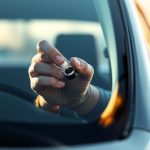
Rock Chip Repair Near You in San Antonio: Fast Fix, Safe Driving
As a driver, you know how important auto glass is for safety. But, there are key safety standards you need to know. These help keep your vehicle and passengers safe.
It’s vital that your vehicle’s glass meets DOT-certified standards. Using non-compliant auto glass can cause big problems in an accident.
Knowing about auto glass safety standards helps you make smart choices. This is for your vehicle’s upkeep and repairs.
Key Takeaways
- DOT-certified glass is a must for vehicle safety
- Non-compliant auto glass can lead to serious consequences
- Understanding auto glass safety standards is key for making good choices
- Regular maintenance keeps your vehicle safe
- Miracle Auto Glass is here to help with your windshield or glass damage repair needs
For fixing or replacing your vehicle’s auto glass, count on Miracle Auto Glass. They do it right.
The Critical Role of Auto Glass in Vehicle Safety
Your vehicle’s auto glass does more than just let you see. It’s key for safety and keeping your car together. It helps protect you and your passengers when you’re driving.
Structural Support and Occupant Protection
Auto glass helps keep your car strong. In a rollover, it keeps the roof from collapsing. Also, laminated glass in windshields stays together when hit, making injuries less likely.
Visibility Requirements for Safe Driving
Seeing clearly is vital for driving safely. Auto glass is made to give you a clear view of the road. Proper visibility lets you quickly respond to road dangers.
Weather and Environmental Considerations
Auto glass can handle different weather, from cold to rain. Advanced manufacturing techniques keep windshields and windows clear in bad weather.
Optical Clarity Standards
Clear vision is essential for driving safely. Rules set standards for auto glass clarity. This helps you spot pedestrians, cars, and hazards on the road.
Auto Glass Safety Standards: A Complete Overview
Auto glass safety standards have changed a lot over the years. They are key to keeping drivers and passengers safe. These standards make sure vehicle glass is up to safety standards.
Historical Development of Safety Regulations
The history of auto glass safety standards started in the mid-20th century. The first federal rules were made back then. These rules have gotten stricter over time to match new car tech and safety studies.
Current Federal Requirements
Today, auto glass in cars must follow rules from the Department of Transportation (DOT). These rules set the minimum safety standards for auto glass.
ANSI Z26.1 Standards
The ANSI Z26.1 standard is a big deal for auto glass. It lists the safety needs for car glass. It talks about things like how well the glass holds up to impacts, how clear it is, and how long it lasts.
International Equivalents
In the U.S., the ANSI Z26.1 standard is used. But other places have their own rules. For example, the European Union has the ECE R43 standard. Knowing these standards is important for car makers and repair shops that work all over the world.
To show how different and similar these standards are, look at this table:
| Standard | Region | Key Requirements |
|---|---|---|
| ANSI Z26.1 | United States | Impact resistance, optical clarity, durability |
| ECE R43 | European Union | Impact resistance, optical clarity, labeling requirements |
| Other International Standards | Various | Varying requirements based on regional regulations |
Knowing these standards helps make sure your car’s glass is safe. This makes driving safer for you.
Understanding DOT Certification for Windshields and Windows
DOT certification is key for auto glass safety and federal rules. The Department of Transportation (DOT) has strict auto glass standards. These ensure the glass is safe and durable. But what does DOT certification mean, and why is it important?
Decoding DOT Markings on Auto Glass
DOT-certified glass has a special code for safety standards. You’ll find this code in the windshield’s corner or on the glass edge. It starts with “DOT” and has numbers and letters for the maker and standard. For example, “DOT 115 M” shows it meets safety glazing standards.
Testing Procedures for Certification
Auto glass must pass tough tests to get DOT certification. It’s tested for impact, fragmentation, and clarity. The glass must not break easily and must not cause injuries with sharp pieces.
Legal Implications of Non-Certified Glass
Non-certified glass can lead to legal trouble. If you’re in an accident with non-compliant glass, you might face fines and liability. Insurance might also not cover damages if the glass isn’t DOT-certified.
| Certification Type | Description | Legal Compliance |
|---|---|---|
| DOT-Certified | Meets federal safety standards for auto glass | Yes |
| Non-Certified | Does not meet federal safety standards | No |
Getting DOT-certified auto glass is more than avoiding legal problems. It’s about keeping you safe on the road. Always look for the DOT mark when replacing glass. Choose a trusted service to ensure it meets standards.
Federal Motor Vehicle Safety Standards for Glazing Materials
It’s important to know about Federal Motor Vehicle Safety Standards (FMVSS) for glazing materials. These rules help keep your vehicle safe. They make sure the glass in your car meets strict safety standards.
FMVSS 205: Requirements and Compliance
FMVSS 205 sets rules for the glass in cars, like windshields and side windows. It makes sure this glass is safe, by testing it for impact and clarity. This means the glass is made to protect you in accidents.
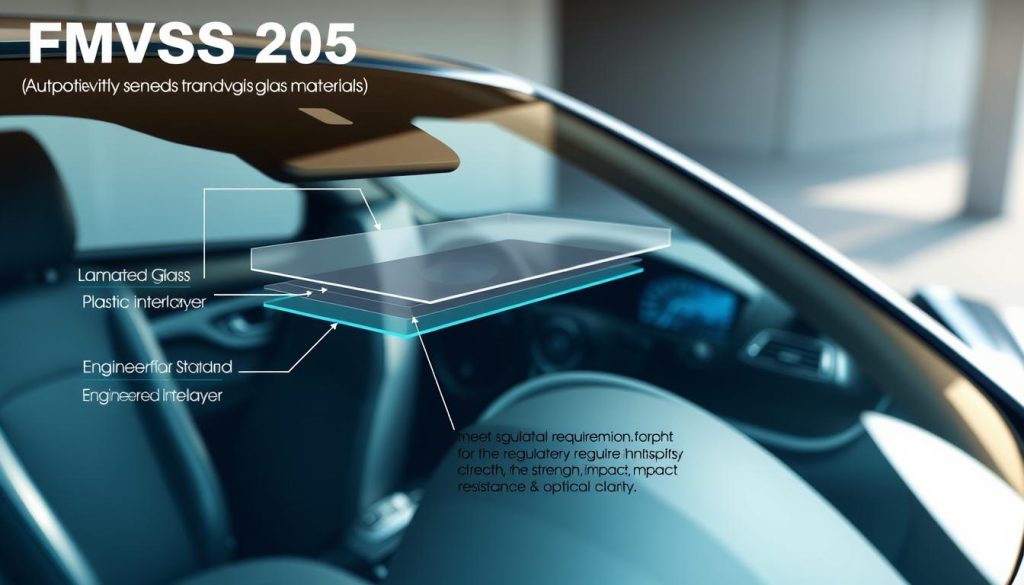
FMVSS 212: Windshield Mounting Standards
FMVSS 212 deals with how windshields are attached. It makes sure they stay in place during crashes. This keeps people inside the car. It’s key for your car’s safety.
Recent Updates to Federal Regulations
New rules for FMVSS have brought in better glass and safety tech. For example, they make sure glass works well with new car features. Knowing about these changes helps you keep your car in top shape.
| Standard | Description | Impact on Safety |
|---|---|---|
| FMVSS 205 | Specifies requirements for glazing materials | Ensures auto glass meets safety standards for impact resistance and clarity |
| FMVSS 212 | Dictates windshield mounting standards | Prevents windshield detachment during crashes, reducing occupant ejection risk |
How Windshields Contribute to Vehicle Structural Integrity
Your vehicle’s windshield is key to keeping it safe, even in accidents. It’s not just for safety; it’s a big part of the car’s structure.
Roof Crush Resistance Standards
The windshield helps keep the car’s roof strong. This is very important in rollover accidents. A strong roof can save lives.
Rollover Protection Systems
Rollover protection systems work with the windshield for better safety. The windshield’s strength is essential for these systems to work well.
Engineering Principles Behind Safety Design
Windshield safety comes from advanced materials and designs. Laminated glass keeps the windshield strong even when broken. This keeps the car safe.
Crash Test Performance Requirements
Cars go through tough crash tests to check their safety. The windshield plays a big role in these tests. It must stay strong under big forces. Crash test performance requirements are very strict to ensure cars are safe.
In short, the windshield is a critical part of your car’s safety. It helps keep the car safe in accidents.
Auto Glass and Advanced Driver Assistance Systems (ADAS)
Modern cars have more Advanced Driver Assistance Systems (ADAS) than ever before. These systems, like lane departure warning and adaptive cruise control, need a clear view. They use cameras and sensors on the windshield to work right.
Camera and Sensor Integration with Windshields
The windshield holds cameras and sensors for ADAS. They must be set up right and stuck to the glass well. DOT-certified glass is key to handle the extra weight and stress.
Calibration Requirements After Glass Replacement
When you replace the glass, you need to calibrate the ADAS cameras and sensors. This makes sure they work as they should. The steps to do this can differ based on the car and its ADAS features.
Static vs. Dynamic Calibration Procedures
Calibration can be static or dynamic. Static calibration is done when the car is stopped, using targets or patterns. Dynamic calibration needs the car moving to get the ADAS parts right.
Safety Risks of Improper ADAS Functionality
ADAS that’s not set up right can be very dangerous. If it doesn’t work right, it might not warn the driver of dangers. This could lead to accidents. It’s important to make sure ADAS works with safety-compliant auto glass to keep everyone safe.
Safety-Engineered Glass Types and Technologies
Auto glass has changed a lot to add safety features. Today’s cars use special glass to protect people and make driving better.
Laminated Glass: Construction and Safety Benefits
Laminated glass has a special layer in the middle. This layer is called polyvinyl butyral (PVB). It makes the glass very strong and keeps it together if there’s an accident. This reduces the chance of getting hurt by sharp glass.
Tempered Glass: Applications and Protection Features
Tempered glass is made to be stronger and last longer. It’s often used for side and rear windows. This is because it breaks into small, safe pieces instead of sharp ones. This helps prevent cuts and injuries.
Emerging Technologies in Auto Glass Safety
The car industry is always improving auto glass for safety and comfort.
Acoustic Interlayers
Acoustic interlayers are added to laminated glass. They help make the car quieter by blocking out noise.
Infrared and UV Protection
Now, auto glass can also protect against harmful rays. It blocks infrared and UV radiation. This keeps skin safe and prevents the car’s interior from fading.
These new auto glass technologies make driving safer and more comfortable. Knowing about these safety features helps you take better care of your car.
Replacement Glass Compliance with Safety Standards
When you replace auto glass, safety should be your main concern. It’s important to follow safety standards. This ensures your vehicle’s safety features work well and keeps you and your passengers safe.
OEM vs. Aftermarket Glass Considerations
You have two choices for replacement glass: OEM and aftermarket. OEM glass comes from the same maker as your car’s original glass. It’s a perfect match in quality and specs. Aftermarket glass is made by other companies and might not be as good.
Even though aftermarket glass is cheaper, make sure it’s DOT-certified. This ensures it meets safety standards.
Installation Procedures for Maximum Safety
How the glass is installed is just as important as the glass itself. Here are some key points:
- The adhesive for the windshield must meet certain standards for a strong bond.
- It’s important to let the adhesive cure properly. Follow the drive-away intervals to ensure it’s strong enough.
Adhesive Requirements
The adhesive must fit the glass and the car’s frame well. This creates a watertight seal and keeps the structure strong.
Curing Time and Safe Drive-Away Intervals
It’s vital to follow the adhesive’s curing time as instructed. Using the car too soon can weaken the bond, risking safety.
| Installation Factor | Importance | Recommended Practice |
|---|---|---|
| Adhesive Quality | High | Use DOT-approved adhesives |
| Curing Time | High | Follow manufacturer’s curing instructions |
| Technician Expertise | High | Ensure technicians are certified and experienced |
Quality Control Processes
Having strong quality control is key to meeting safety standards. This includes checking the glass for defects and making sure it’s installed right.
State-by-State Windshield Regulations in America
Knowing your state’s windshield rules can prevent legal trouble. Windshield laws differ greatly across the U.S.
Inspection Requirements Across Different States
States have their own rules for windshield checks. Some need checks when you renew your vehicle registration. Others might inspect your car more often.
It’s important to visit your state’s Department of Motor Vehicles (DMV) website for the latest on these rules.
Damage Tolerance Limits for Legal Compliance
States set their own rules for how much damage a windshield can have. Some allow small chips and cracks, while others see any damage as a problem.
Knowing these limits helps keep your car legal and safe to drive.
Tinting and Obstruction Laws
Laws on tint and obstructions are key for windshields. States control how dark tint can be and what can block your view.
Visibility Requirements
Most states have rules on how clear your windshield must be. Some say nothing can block your view. Others allow a certain amount of blockage.
For example, some states ban anything that blocks your view, while others allow a bit.
Permitted Attachments and Modifications
There are rules for what you can add to your windshield. This includes stickers, rain sensors, or camera mounts.
Always check local laws before adding anything to your windshield to avoid fines.
Insurance Considerations for Safety-Compliant Glass Replacement
Insurance is key for safety-compliant glass replacement. It’s important to know your insurance options when replacing auto glass. This helps you make smart choices.
Comprehensive Coverage Policies
Comprehensive coverage often includes auto glass replacement. These policies can help pay for DOT-certified glass. This ensures your car meets safety standards. Check your policy to see what’s covered.
Zero-Deductible Glass Coverage Options
Some insurance offers zero-deductible glass coverage. This means you won’t have to pay a deductible for glass replacement. It makes keeping your car safe more affordable.
Ensuring Quality Repairs Through Insurance Claims
When you file a claim for auto glass replacement, make sure the shop uses DOT-certified glass. Also, they should follow the right installation steps. This keeps your car safe to drive.
When to Repair or Replace Your Auto Glass for Safety
It’s important to know when to fix or replace your car’s glass for safety. The glass in your car is key to its safety, helping keep you safe and visible on the road. Damage to this glass can make driving unsafe, leading to accidents or injuries.
Evaluating Damage Severity
First, you need to check how bad the damage is. This depends on the type and where the damage is.
Chips, Cracks, and Structural Concerns
Chips and cracks are common damage. Small chips might be fixed, but big cracks could mean you need a new glass. This is because they can weaken the glass’s structure.
Location-Based Risk Assessment
Where the damage is also matters a lot. Damage that affects your view or the glass’s strength is riskier. You might need a new glass for these cases. For help finding a good service, check out these tips.
Safety-Critical Scenarios Requiring Immediate Attention
Some damage needs fixing right away for safety. If the glass is so damaged it’s not safe to drive, get it fixed or replaced fast.
| Damage Type | Severity | Recommended Action |
|---|---|---|
| Small Chip | Low | Repair |
| Large Crack | High | Replace |
| Crack in Driver’s Line of Sight | High | Replace |
Professional Assessment Guidelines
Even if you think you know the damage, a pro should check it. They can spot risks you might miss.
Knowing when to fix or replace your car’s glass keeps you safe. Regular checks and quick fixes help keep your car safe and follow safety rules.
Miracle Auto Glass: Commitment to Safety Standards Excellence
At Miracle Auto Glass, you’re not just getting a glass replacement; you’re getting a commitment to the highest safety standards. As a trusted provider, Miracle Auto Glass ensures that all repairs and replacements meet the stringent safety compliance regulations. They use DOT-certified glass for all their work.
Technician Certification and Ongoing Training
Miracle Auto Glass technicians go through tough training and certification. They learn the latest safety protocols and installation techniques. This ensures your auto glass is installed right, keeping your vehicle safe.
Quality Assurance Protocols
The company follows strict quality assurance protocols. They check everything from material sourcing to the final inspection. This careful process makes sure every job meets top safety and quality standards.
Advanced ADAS Calibration Capabilities
Miracle Auto Glass has the latest tools for Advanced Driver Assistance Systems (ADAS) calibration. They use manufacturer-specific calibration equipment to make sure ADAS systems work right after glass replacement.
Manufacturer-Specific Calibration Equipment
Miracle Auto Glass uses special tools for precise ADAS calibration. These tools match the specs of major vehicle makers.
Verification Procedures
After calibration, they do thorough checks to make sure everything works as it should. This gives you peace of mind and makes the road safer for you.

Conclusion: Safeguarding Your Journey with Proper Auto Glass Care
Auto glass safety standards are key to keeping your vehicle safe and you safe on the road. Knowing about DOT certification and the right windshield installation is important. Being informed helps protect your journey.
Choosing the right auto glass repair or replacement service is critical. Miracle Auto Glass focuses on auto glass safety. They use the latest technology and strict quality checks to fix your vehicle’s glass right.
Don’t wait until it’s too late. Contact Miracle Auto Glass today. Make sure your vehicle’s auto glass meets all safety standards. This step is vital for your safety and that of your loved ones.
